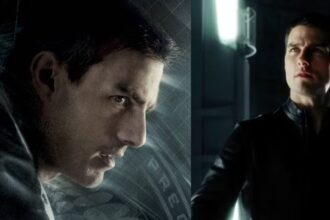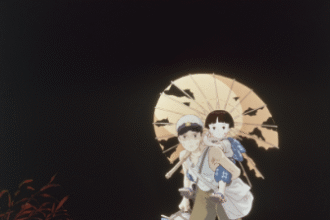
The Butterfly Effect builds its core around Evan Treborn, a young man who struggles with memory blackouts during traumatic events in his childhood. Later, as an adult, he discovers that reading his old journals allows him to travel back into those exact moments of his past.
Every time he does this, he attempts to change what went wrong in his friends’ and family’s lives. The theory of cause and effect stands central here: even the smallest change in the past leads to a wildly different present.
As the story progresses, Evan learns an important truth. While he tries to create a better life, each alternate present he creates becomes darker than the last.
For instance, when he prevents a childhood tragedy, he wakes up in a reality where his best friend is in prison. In another attempt, he ends up confined to a psychiatric institution. Instead of fixing things, his time-travel efforts tear apart the lives of everyone he cares about.
By the final act, Evan understands that his power is both a gift and a curse. Instead of using it as a tool for repair, it becomes the source of everyone’s destruction. Ultimately, the climax brings him face-to-face with the weight of his own choices.
Also Read: Burning Ending Explained: A Truth Consumed by Fire
The Final Choice: Sacrifice Over Desire
In the concluding moments, Evan discovers that his persistence in altering the past is the actual cause of everyone’s suffering.
He deeply loves Kayleigh, his childhood friend and eventual love interest across timelines, and in almost every change Evan attempts, his main motivation is creating a life where he and Kayleigh can be together happily. But fate continues twisting events to block that outcome, showing him that their bond always ends in brokenness.
The time-travel rules in the movie make it clear that the past cannot be endlessly rewritten without severe consequences. With every shift, Evan becomes more broken, both physically and mentally. The final revelation comes when he realizes there is only one way left: he has to eliminate himself from Kayleigh’s life entirely.
Evan rewinds back to one of his earliest blackout episodes, a haunting childhood incident when he first met Kayleigh. Instead of creating a relationship with her, he deliberately behaves in a cruel and threatening way to scare her off. This choice ensures that Kayleigh never stays in his orbit, thereby avoiding the chain of tragedies that followed their connection.
It is here that the true meaning of the butterfly effect becomes evident: sometimes, the only way to create stability is to remove yourself as the cause of disruption. Evan sacrifices not only his love but also the life he desperately wanted, because he finally understands that his desire for control is destroying everyone.
Interpreting the Ending: Meaning and Hidden Symbolism
Unlike many science-fiction thrillers, The Butterfly Effect delivers an ending rooted more in emotion than spectacle. It highlights a tragic reality: some relationships are not destined to work, no matter how hard someone tries to rewrite them. By letting go, Evan chooses the well-being of others over his personal happiness.
Thematically, the ending can be understood in three ways:
-
Fate Over Free Will: Evan’s repeated attempts prove that the universe has a balance that resists forced changes. Free will exists, but when manipulated unnaturally through time travel, it creates chaos. The ending suggests that some outcomes are inevitable, and love cannot survive when the cost of achieving it is destruction for everyone else.
-
The True Meaning of Sacrifice: Up until the end, Evan acts with selfish hope, believing he can create perfection. The last choice is his one truly unselfish act: letting go of the person he loves most for the greater good. It redefines him not as a failed savior, but as someone who learned the cost of love and responsibility.
-
The Cycle of Cause and Effect: The title itself reflects that a butterfly flapping its wings in one timeline can lead to storms in another. Evan’s journey directly mirrors this idea. By cutting himself out of Kayleigh’s future, he stops that ripple before it begins. The storm never forms because he never gives the universe the chance to react.
The more hidden layer of symbolism is the way the film treats memory and trauma. Each blackout from Evan’s childhood represented a traumatic wound. His adult ability to revisit these points is symbolic of how people try to “rewrite” their pain.
But the runtime makes clear: healing doesn’t come from rewriting the past, but rather from accepting it and making peace with it. Evan’s ending decision echoes this philosophy, as acceptance replaces control.
The Emotional Impact: A Bittersweet Resolution
The film closes with Evan and Kayleigh crossing paths years later in adulthood, each living separate lives shaped by his final action.

They pass each other on the street with no acknowledgement, carrying only faint, unrecognisable echoes of what might have been. It’s a striking yet heartbreaking conclusion, because the audience sees them almost recognize one another for a second, but keep walking.
This moment reveals that while Evan saved Kayleigh from a life of trauma and suffering, he also erased the relationship he valued most.
The ending is bittersweet because it gives everyone else a chance at peace, while stripping Evan of companionship and fulfillment. It reinforces the emotional takeaway that sometimes love is not about possession but protection, even if that protection means sacrificing yourself entirely.
Why the Ending Still Resonates With Audiences
The Butterfly Effect holds a special place in early-2000s cinema. Unlike typical thrillers, its ending lingers because it poses a universal question: what would you give up to protect those you love? Many films center on grand victories, but this story finds resolution in surrender and sacrifice.
The ending continues to spark discussions because it leaves multiple interpretations open. Some see it as tragic, others as noble.
Some argue that Evan had no choice but to erase himself, while others debate whether fate was cruel to deny him happiness. No matter the angle, it makes the viewer reflect on the complexity of human choices and the limits of control over destiny.
The narrative also resonates with anyone who has wished to go back and fix a past mistake. By showing how even small changes ripple out unpredictably, the film cautions us to think about moving forward instead of trying to reshape what has already happened.
In the end, The Butterfly Effect provides not a happy resolution, but a meaningful one. Evan’s decision tells us that love sometimes demands sacrifice rather than satisfaction, and that true strength lies in letting go.
While audiences may ache for the relationship that never materializes, the conclusion gives a layered truth: stability for others is more valuable than individual happiness.
The ending feels tragic and uplifting all at once, a rare contradiction. It reminds viewers that control over destiny is limited, and perhaps the bravest act is choosing peace over chaos, even at the cost of personal loss.
Also Read: Elemental Ending Explained: Love Defies Boundaries of Fire and Water







